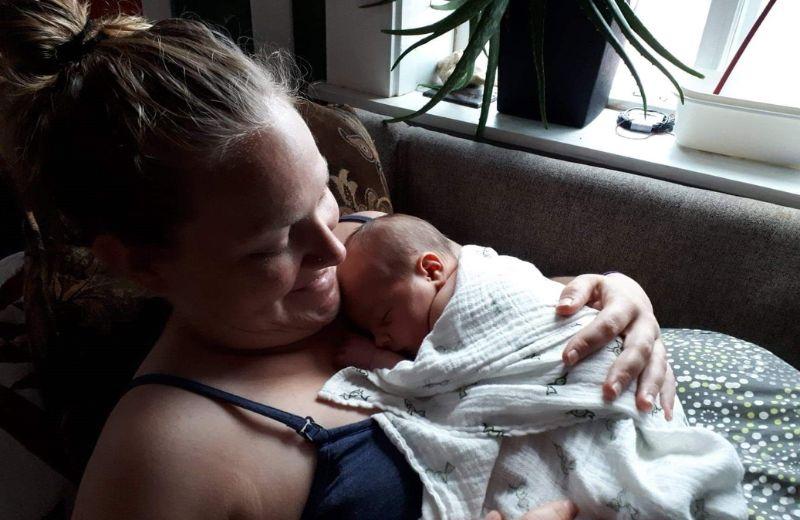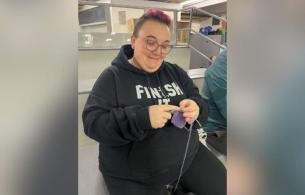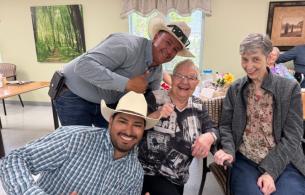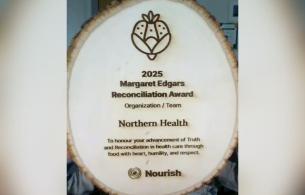This is my family’s story about feeding our first child, Soren. Feeding was not as easy as I had anticipated. With the support of our local midwife, my dedicated partner, and a lactation consultant, we were able to reach our goal of feeding him my milk directly from my breasts. I hope this story can inspire others to ask for support when you need it, and accept it when it comes your way. Breastfeeding doesn’t always look exactly how we imagined it would be, but it can be a beautiful journey nonetheless.
Keep baby fed, milk flowing, and baby close

I had nipple pain from early on. A few days after birth, Soren’s poop hadn’t changed colours the way it should - instead of turning yellow, it was bloody. We were in contact with our midwife, sending daily poo pics and questions to her. She promptly came to see us for an assessment. Something was preventing him from getting the milk he needed, so we started on our first feeding plan:
- Keep the baby fed: a combination of my breast milk and formula was needed
- Keep my milk flowing: I tried hand expression and pumping to increase my milk production
- Keep baby close: we held Soren skin-to-skin as often as possible
As we learned to navigate this feeding plan, we suspected that Soren had a tongue tie.
Tongue ties can make it difficult for a baby to breastfeed, and can cause nipple pain for the mother. La Leche League Canada explains tongue ties as follows:
Everyone has a thin membrane of tissue (lingual frenulum) that holds the bottom of the tongue to the floor of the mouth. In some people it is visible, and in others it is not. A visible lingual frenulum is not always a sign of a tongue-tie. A tongue tie is present when the lingual frenulum is tight and/or thick enough to restrict normal tongue movement.
This caused me quite a bit of nipple pain. Something I learned is that diagnosing tongue ties is out of scope for midwives. So, we needed to explore options for diagnosis and treatment.
Lean on your team

My partner Alan and I were a team from the start. We started off fumbling to find a rhythm, but by the end of a month, we were a well-oiled machine! Alan helped to prepare our supplies before each feed. When I pumped, Alan finger-fed Soren my expressed milk and formula. We usually finished pumping and feeding around the same time and then we moved to the next step of the dance: cleaning!
I thought milk volumes would increase quickly. This wasn’t the case for our family. We continued pumping and supplementing as a team until we could see a specialist. My milk supply caught up with Soren’s feeding demand after about three weeks of our feeding plan.
Access specialized supports (sometimes it’s needed!)
There are a few specialists who can diagnose tongue ties, including physicians and dentists with special training. The best decision for our family was to see a dentist. After a thorough assessment, Soren was diagnosed with tongue tie. While not all babies need treatment, releasing the tie was best for us. Though we were able to increase my milk supply, my nipple pain was not improving.

After Soren’s laser treatment we met with a lactation consultant. This follow up is recommended for families after a tongue tie is released, because it can help transition back to feeding at the breast. With her support, I was finally able to feed my baby directly at the breast. This was such a huge milestone for our feeding journey!
“WE’RE DOING IT!”
I look back on this experience and am in awe of all the supports we had to get us to our feeding goal. Early on, Alan and I started saying to each other and others when asked how things were going: “We’re doing it!” This phrase has stuck; even now, with two more kiddos added to the family, we meet each new challenge as it comes.
It’s so important that families know where to go if breastfeeding becomes a challenge. Sometimes it can be hard to find the help you need, though resources are available. Here are a few places to start:
- Help with breastfeeding - Northern Health
- Getting breastfeeding on track after a difficult start – the “3 Keeps” - La Leche League GB
- Tongue and lip ties - La Leche League Canada














Comments